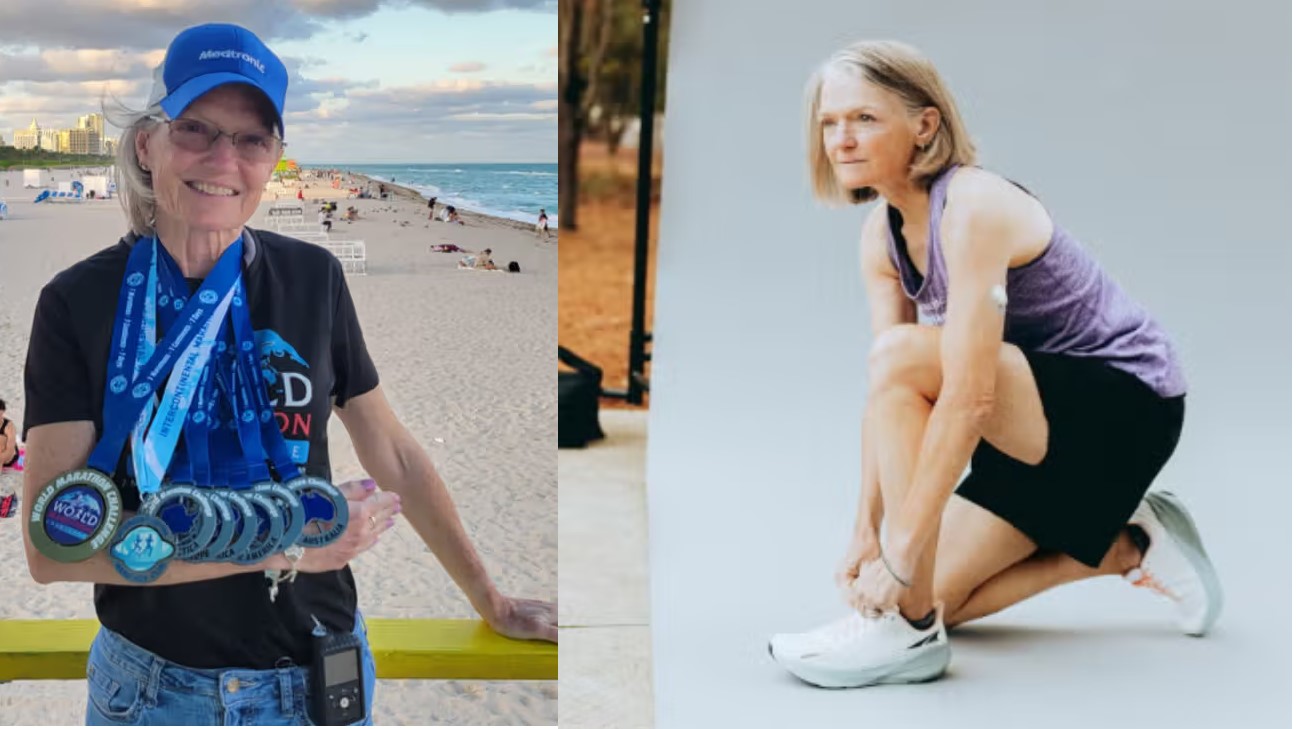Linda Carrier began her marathon journey in her 30s and continues to run long distances into her 60s. She emphasizes the importance of staying fit throughout life, sharing tips such as finding an enjoyable activity and making it a habit.
Carrier’s second marathon was to confirm her first wasn’t a fluke. With 81 marathons and 55 half-marathons under her belt, it’s clear it wasn’t. She started running as a child when her mother sent her to do laps around the block. Even after being diagnosed with type 1 diabetes at 14, she didn’t stop.
However, competitive running didn’t begin until her 30s. Initially thinking she’d be “one-and-done” after her first marathon, she found the experience enjoyable and calming, leading her to run one or two marathons annually. She eventually took on larger challenges, including a 50-mile ultramarathon on her 50th birthday and the World Marathon Challenge three times, running a marathon on each of the seven continents in seven days.
Now 61 and based in North Carolina, Carrier aims to run a marathon in all 50 states, with only eight states left. In a typical week, she runs 40 to 50 miles, increasing to 125 miles when training for a race.
Carrier’s journey, starting in her 30s and continuing into her 60s, can inspire those interested in running, a sport gaining popularity as shown by the New York Road Runners’ sell-out races. Running offers significant health benefits, with studies showing it reduces the risk of cardiovascular disease and cancer.
Carrier’s advice for lifelong fitness includes:
**Stay active:** Carrier suggests staying active with any form of movement, even simple choices like taking the stairs. She believes maintaining an active mindset is crucial for a long, healthy life, supported by research linking physical activity to lower risks of cardiovascular disease and cancer.
**Find a sport you love:** Carrier encourages finding an enjoyable sport, which makes it easier to maintain long-term. The National Institute on Aging recommends exercises that incorporate endurance, strength, balance, and flexibility.
**Make being active a habit:** Carrier advises making physical activity a regular habit by incorporating it into daily routines for at least three months.
**Have a long-term goal:** She stresses the importance of setting long-term goals, motivating oneself with the vision of where one wants to be in the future. Goals focused on improving health and skills are more effective long-term motivators than those centered on weight loss.



